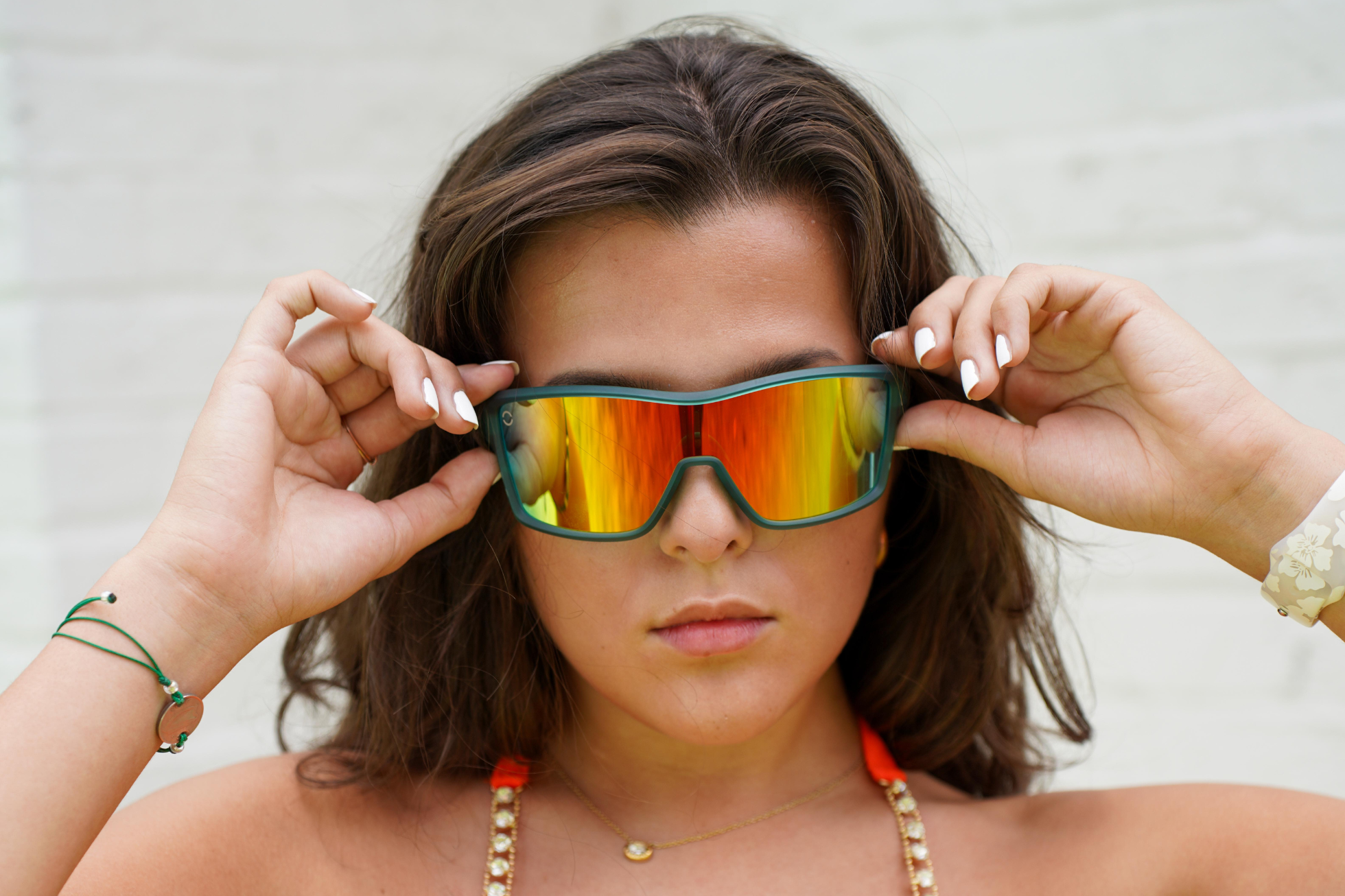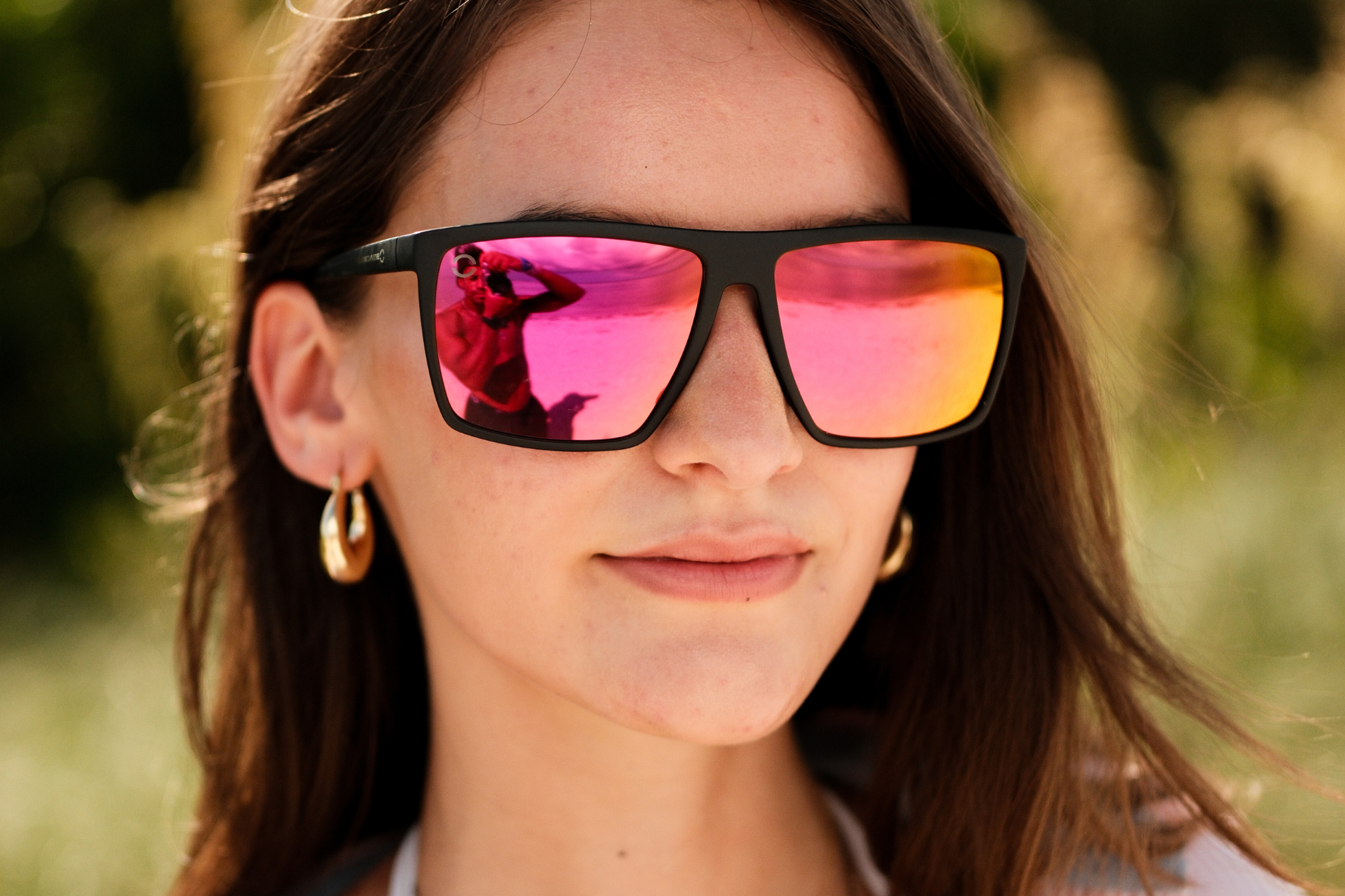Whether you're training for a marathon, hitting the trails, cycling through city streets, or just enjoying the outdoors, sporty sunglasses are a critical piece of your gear. More than just a style accessory, these performance-driven shades offer essential eye protection, improved visibility, and comfort that adapts to your pace.
This article dives into everything you need to know about sporty sunglasses—from key features and performance benefits to how to choose the best pair based on your activity. You’ll also learn about trending designs, lens technology, and how top brands are meeting the demands of modern athletes.
Why Sporty Sunglasses Matter More Than Ever
In 2025, sunglasses have evolved beyond fashion statements. For athletes, weekend warriors, and outdoor enthusiasts alike, sport sunglasses are vital for maintaining visual clarity, reducing eye fatigue, and protecting against long-term UV damage.
Exposure to harsh sunlight—especially during prolonged outdoor activities like running, biking, or kayaking—can cause a range of issues, including eye strain, dry eye, and even conditions like cataracts over time. Sporty sunglasses help mitigate these risks by offering 100% UV protection, specialized lens coatings, and frames designed to stay put even during high movement.
But beyond eye health, performance eyewear plays a critical role in optimizing your experience. For example, polarized lenses cut through harsh glare from pavement, water, or snow—making them ideal for cyclists and water sport athletes alike. Meanwhile, wraparound frames protect against wind and peripheral light, ensuring an unobstructed view at all angles.
Key Features to Look for in Sporty Sunglasses
When shopping for the perfect pair of sporty sunglasses, you’ll want to evaluate several performance-related features. Not all sunglasses are created equal, and the right combination of features can make or break your performance.
UV Protection
First and foremost, UV400 protection or 100% UVA/UVB protection is a non-negotiable. This shields your eyes from harmful radiation, reducing your risk of long-term damage.
Polarized Lenses
Polarization is especially important for sports like fishing, kayaking, skiing, and road cycling. These lenses reduce glare from flat, reflective surfaces like water or pavement, allowing better contrast and sharper focus.
Lightweight & Durable Frames
Sporty sunglasses are often made from materials like TR90, polycarbonate, or nylon—all of which are both light and impact-resistant. This ensures the frames can take a beating during physical activity without weighing you down.
Non-Slip Nose Pads and Temples
Sweat can make regular sunglasses slip, but sporty models often feature rubberized grips that stay secure no matter how much you move or perspire.
Wraparound Design
Wraparound frames offer a secure fit and complete coverage, shielding your eyes from wind, dust, and sun from all angles. This is especially useful for fast-moving sports like cycling or trail running.
Ventilation
Some high-end models feature lens or frame ventilation to reduce fogging—particularly helpful in humid or rapidly changing climates.
Best Sporty Sunglasses for Different Activities
Different sports demand different features. While some athletes may prioritize aerodynamics, others need clarity in rapidly changing environments. Below is a breakdown of recommended styles by sport.
Running
For runners, comfort is key. Look for ultralight frames with sweat-resistant grips. Lenses should be slightly tinted to enhance contrast on roads and trails without darkening vision too much.
Popular options include:
-
Semi-rimless frames to reduce weight
-
Blue or amber lenses to enhance contrast
-
Shatterproof polycarbonate lenses
Cycling
Cyclists require wide-angle lenses for peripheral awareness and aerodynamic frames that fit under helmets. Ventilated designs can also reduce fog on long rides.
Key features include:
-
Wraparound coverage
-
Anti-fog and polarized coatings
-
Adjustable nose pieces for a snug fit
Hiking & Trail Sports
For hiking, versatility is key. Lenses should adapt to changing light, especially in shaded forests or sun-exposed mountains. Photochromic lenses are a great fit here.
Recommended features:
-
Impact resistance
-
UV400 protection
-
Scratch-resistant coatings
Water Sports
Sunglasses for water sports like fishing, paddleboarding, or sailing should be fully polarized to eliminate glare and enhance visibility through the water’s surface.
Look for:
-
Floating frames (optional but useful)
-
Hydrophobic coatings to repel water
-
Secure fit with retainer cords or straps
Current Trends in Sporty Sunglasses
The 2025 wave of sporty sunglasses combines performance innovation with modern design aesthetics. Athletes now want sunglasses that are not only functional but also stylish enough to wear casually. This has driven brands to merge sleek silhouettes with bold lens colors and sustainable materials.
Popular Trends Include:
-
Color-tinted lenses: Blue, red, or amber tints for style and function
-
Mirror coatings: Adds flare while reflecting light and reducing eye strain
-
Eco-friendly materials: Bioplastics and recycled frames gaining traction
-
Convertible lenses: Interchangeable systems for different lighting conditions
-
Minimalist sportswear influence: Slim profiles that complement athletic fashion
How to Choose the Right Pair of Sporty Sunglasses
Choosing sporty sunglasses isn't just about brand or aesthetics—it’s about matching your gear to your needs. Here’s a step-by-step process for selecting your next pair:
Step 1: Identify Your Primary Activity
Do you run daily, cycle on weekends, or hike mountains monthly? Narrowing your activity helps determine lens type, coverage, and frame fit.
Step 2: Consider Environmental Conditions
Think about your typical lighting and weather:
-
Bright sunlight? Go with darker polarized lenses.
-
Mixed conditions? Photochromic or interchangeable lenses are best.
-
Wind and debris exposure? Prioritize wraparound styles.
Step 3: Choose Lens Color and Technology
Different tints enhance visibility in different settings:
-
Gray: True color and brightness reduction
-
Amber/Brown: Enhances depth and contrast
-
Yellow: Great for low-light or cloudy conditions
-
Blue/Red: High-contrast in bright, snowy, or water environments
Step 4: Test the Fit
Make sure they sit comfortably without bouncing or slipping. Look for adjustable nose pads and temples if you need a customized fit.
FAQs About Sporty Sunglasses
1. Are sporty sunglasses worth the investment?
Yes. Sporty sunglasses offer performance features like polarization, non-slip grips, and durable materials designed specifically for physical activity and long-term wear.
2. Can I use sporty sunglasses for casual wear?
Absolutely. Many sporty sunglasses now blend function and style, making them suitable for both workouts and everyday use.
3. What’s the best lens color for sporty sunglasses?
It depends on the activity. Gray is great for bright light, amber enhances depth, and blue or red tints can improve contrast in reflective or snowy environments.
Final Thoughts and What to Do Next
Sporty sunglasses are more than an accessory—they’re an essential piece of gear for anyone who spends time outdoors. With advances in materials, lens technology, and comfort features, today’s performance sunglasses are built to enhance your activity, protect your eyes, and elevate your style.
If you're ready to take your performance to the next level, explore the Sundaze Sporty Sunglasses Collection —a lineup engineered for movement, vision, and all-day comfort. Whether you’re training for a triathlon or taking your first hike, you deserve eyewear that keeps up with you.





